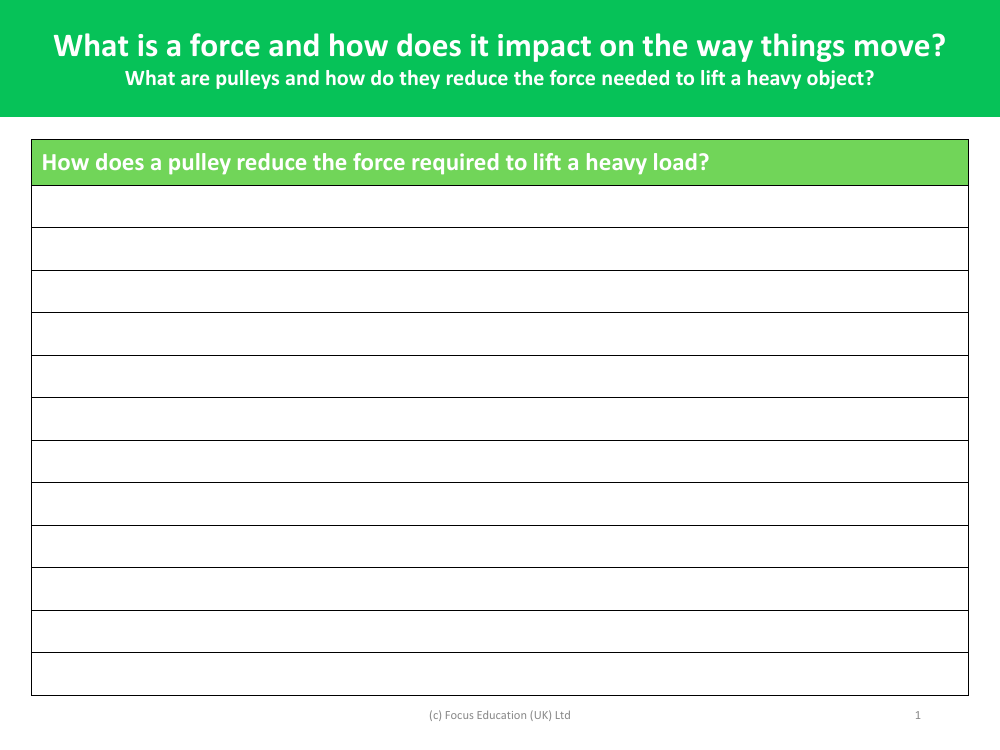How does a pulley reduce the force required to lift a heavy load? - explanation - worksheet

Science Resource Description
A pulley is a simple machine that consists of a wheel over which a rope or chain is pulled to lift a load. The key principle behind a pulley is that it redirects the force applied, allowing for more efficient use of effort. When a person pulls down on one end of the rope, the pulley wheel rotates, and the load attached to the other end is lifted. By changing the direction of the force, a pulley enables the user to utilise their own weight and the force of gravity to assist in the lifting process. This means that less force is required to lift the load than if the person were trying to lift it directly upwards without the aid of a pulley.
Force is essentially a push or a pull on an object that causes it to move, stop, or change direction. In the context of lifting heavy objects, force determines how much effort is needed to overcome the object's weight. Pulleys are designed to reduce the amount of force needed to move an object by spreading the load over a longer distance or by using multiple wheels, known as a pulley system. A single pulley provides a mechanical advantage that allows the user to lift the load more easily, while a system of pulleys can significantly decrease the effort needed by distributing the weight of the load across multiple ropes and wheels. This is why pulleys are widely used in lifting heavy objects in construction, shipping, and other industries where manual load management is required.



